Sennheiser IE 900 Review: This is the Bass I've Been Looking For!
Sennheiser's returned to the high end IEM scene with the release of the IE 900. In a sea of multi-driver and hybrid configurations, it's a 7 mm single DD with a couple neat tricks up its sleeve. Can the IE 900 establish Sennheiser as a key player in the IEM space?
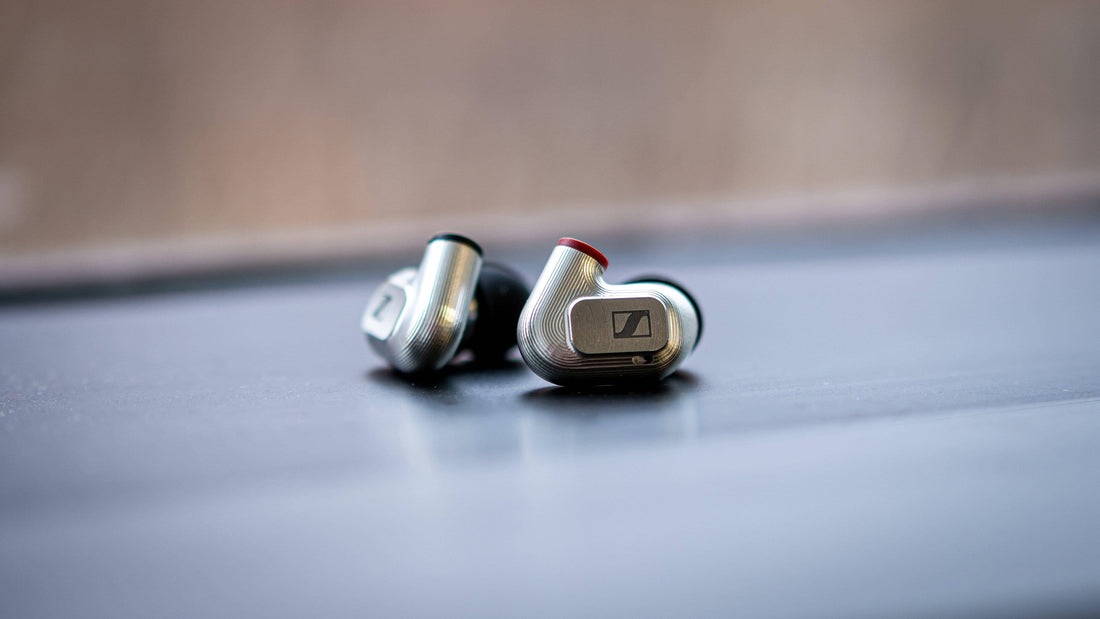
Introduction
Anyone into audio knows the name Sennheiser. Not only are they found in live music venues all over the world, they’re also responsible for three of the most well-known headphones in the head-fi scene: the Sennheiser HD600/650, HD800S, and HE-1. While they’ve admittedly had their fair share of failures, Sennheiser is a brand that best exemplifies German engineering in audio.
Yet there is one arena where they’ve struggled to gain a foothold: in-ear monitors (IEMs). More specifically, “audiophile” IEMs as opposed to their line of pro-audio related stage IEMs. The only notable hi-fi Sennheiser IEM was the IE 800 which piggybacked off the popularity of the HD800, released over a decade ago. Sennheiser simply never gets mentioned in the context of IEMs as opposed to the popularity of their headphones.
So it was a bit of a surprise that May 2021 marked the return of Sennheiser to high-end IEMs with the release of the $1,500 IE 900. Designed from the ground-up using a 7 mm single dynamic driver incorporating innovations like their new X3R transducer system, the IE 900 quickly made waves in the IEM world. Sennheiser capitalized on its success by releasing the $800 IE 600 the following year, and the $150 IE 200 a year later still.
As such, the topic of today’s article will cover their top-of-the-line IE 900. It’ll be the start of a long overdue series covering the Sennheiser IE line-up. I’ve seen some confusion around these IEMs and how they stack up to the rest of the market so I’ll do my best to help you understand where they stand.
Source(s) Used: Ferrum ERCO Balanced DAC & Headphone Amp and Apple USB-C dongle
What we like
- Unparalleled dynamic driver bass quality and texture
- Controlled U-shaped sound signature
- Small, lightweight, and durable
What we don’t like
- Weak midrange tonality
- Treble might be a bit too spicy
- Potentially poor fit
- Semi-proprietary MMCX connectors
What’s in the Box?
The unboxing experience of the IE 900 is a blend of premium and utilitarian. A slide-out box featuring the shiny IE 900 on top with a decent set of accessories below. You get:
- A set of S/M/L silicone tips with foam filters inside to both help tone down the treble and prevent earwax from falling in.
- A set of S/M/L foam tips with the same foam filters inside.
- Three proprietary MMCX cables with 2.5/3.5/4.4 mm terminations. It’s a basic cable with moldable earhooks. The sheathing material is sticky and there’s unfortunately quite a lot of cable noise but at least cable memory is minimal.
- A zippered carrying case.
- A little cleaning tool, a shirt clip, and a microfibre cloth.
- The IE 900 itself, made of precision-milled anodized aluminum.
Unfortunately, I have a large wall of complaints with the IE 900’s stock accessories, design, and ergonomics. I’ve put it in the Appendix to try and help reduce the length of this review but I strongly recommend you read it because it may impact whether or not you buy this IEM.
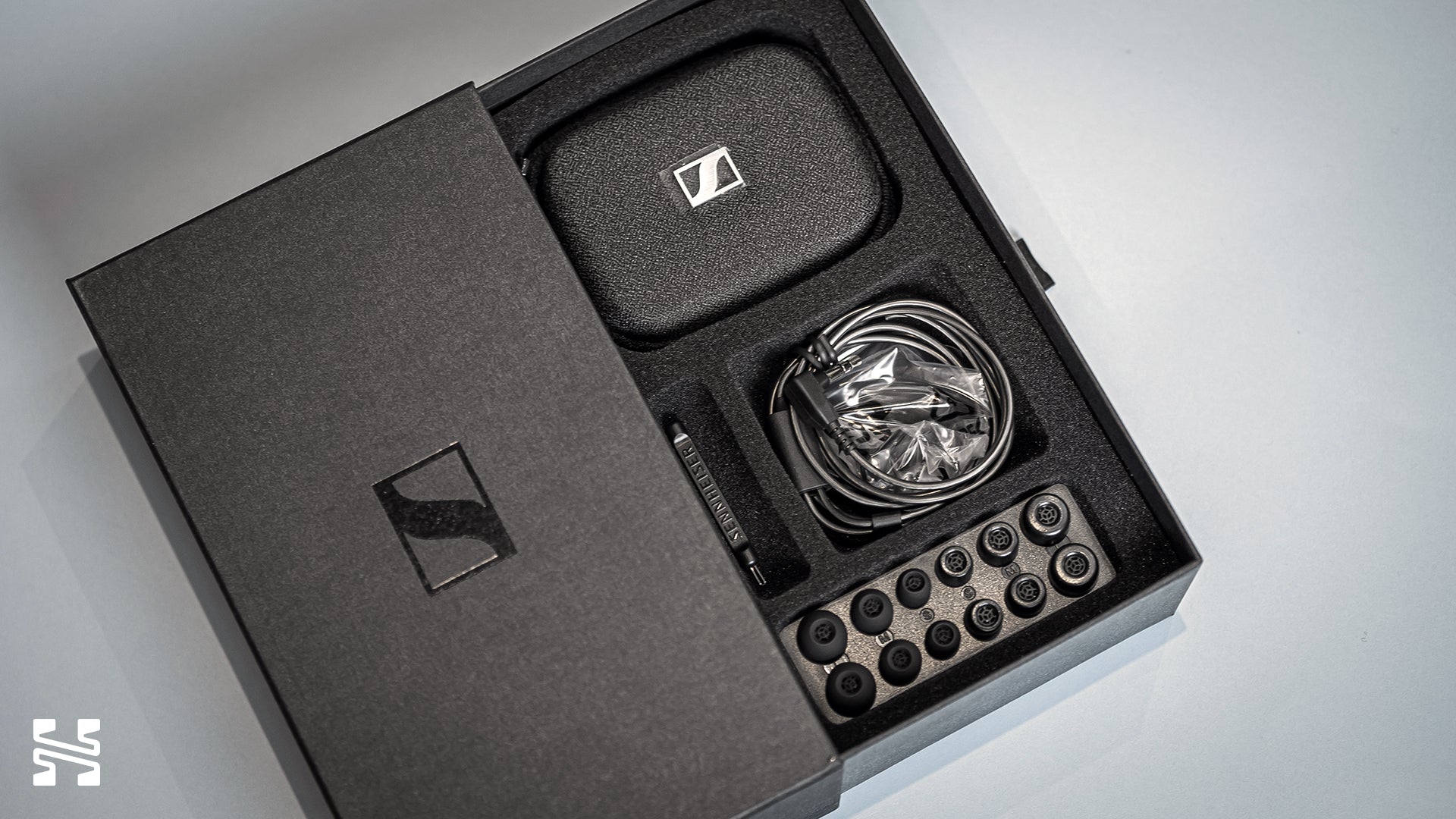
Sound and Frequency Response
Thankfully, there’s a lot that I like about the IE 900’s sound. I’d classify it as a basshead IEM with a U-shaped signature. While the bass is by far the star of the show, the treble performance is quite satisfying for me. The midrange is unfortunately the weakest link.
Here is the calibrated frequency response graph of the Sennheiser IE 900, taken on a clone IEC-711 coupler. A perfectly flat line at 0 equals the diffuse field head-related transfer function (DF HRTF), the anatomical baseline compensation for headphones/IEMs. The wide grey bands are preference bounds that represent listening research that suggests the limits of how much deviation/tonal color a headphone could have that people still found acceptable without it starting to be perceived as imbalanced. Learn more about reading graphs here.
And here is the raw measurement if you’re more familiar with this representation. As a reminder, measurements in the upper treble above the 8 kHz resonance artifact are inaccurate.
Couple of things to point out as we start:
- Wow, that channel matching is practically flawless. This is obviously a single sample, an n = 1, but still very nice to see such great matching. Almost makes me wonder if I didn’t just re-measure the same side twice (I didn’t, I checked).
- For the most part, the tuning of the IE 900 lies right at the edges of the preference bounds. Except of course, the canyon in the upper mids around 3 kHz. And the treble does extend a little past the bounds so it will sound bright.
- It’s bassier than it graphs because of how mild the upper mids are - I’m turning up the volume to hear midrange instruments like the vocals which brings everything up as well. That said, don’t expect a gobsmacking amount of bass. There’s a lot, but this isn’t a boombox-on-your-shoulder type IEM.
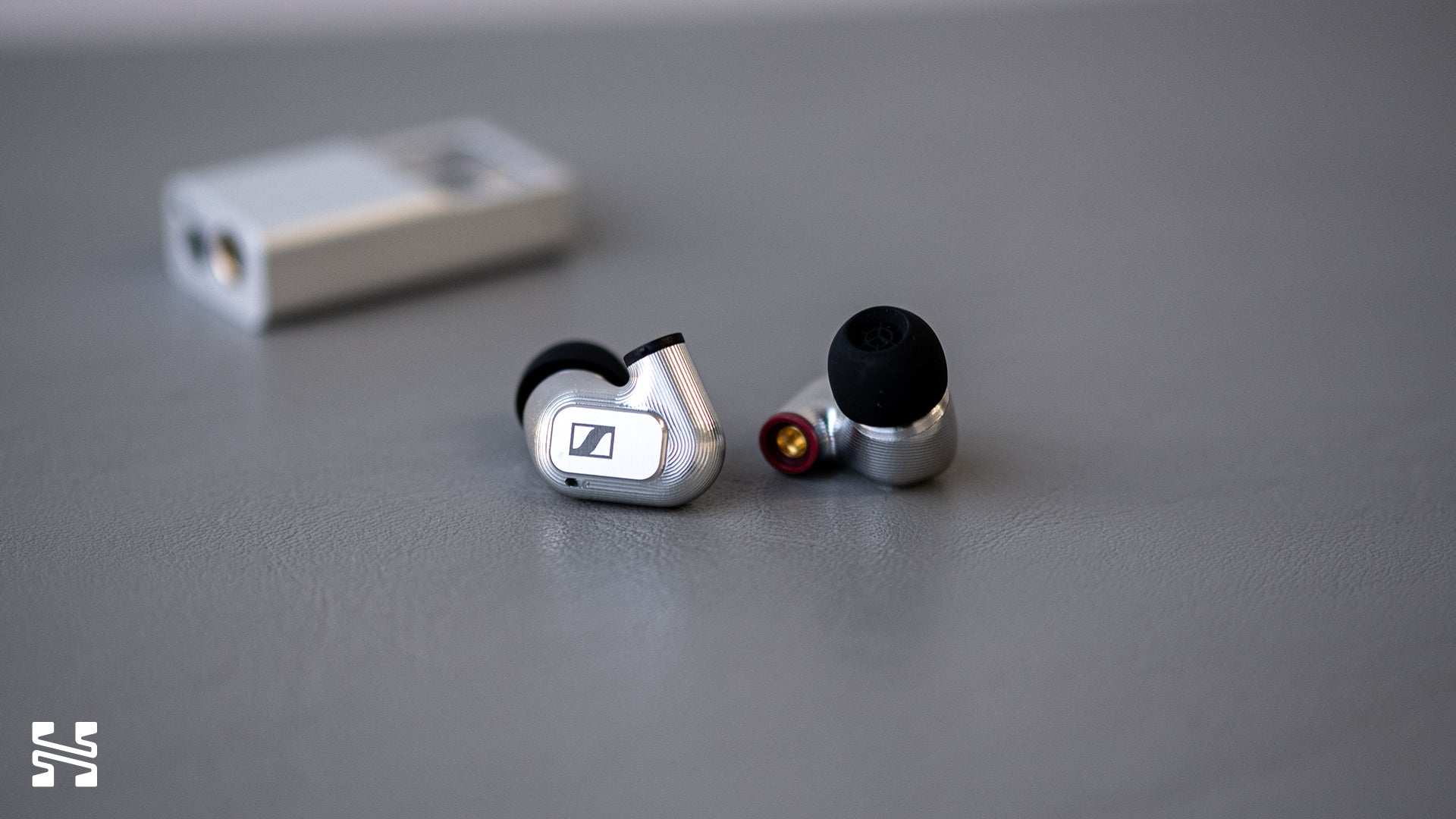
Bass
I’ll say it right upfront. The bass of the IE 900 is possibly the best bass you can get in an IEM. Top 3, at the very least. Bass quality is, of course, subjective. But for my ears and preference, the IE 900 absolutely nails what makes bass great.
For me, the IE 900’s bass has an exceptional rawness to it. It’s extremely textured to hear all the details in a note as it rumbles and decays. It leads briefly with the midbass punch then dominates with subbass weight. Macrodynamics are in full display. My only minor nitpick is that it doesn’t quite have the explosive attack of something like the Effect Audio x Elysian Acoustics Gaea or the hard transient edge of the SUBTONIC Storm. There’s maybe just the slightest smearing in the initial attack, perhaps from a hint of excess energy around 250 - 300 Hz, but makes up for it with an authoritative body.
All of this translates into some of the best rendition of drums I’ve heard in an IEM. Kick drums and floor toms have a depth of resonance and meatiness that I just don’t hear on other IEMs. Bass guitars are fat. The best part is that the IE 900 doesn’t sacrifice control or definition. The distorted and pulsing tones of synths are clearly laid bare. The strings of the double bass are nuanced even at the lowest frequencies. The bass of the IE 900 is really something to be experienced.
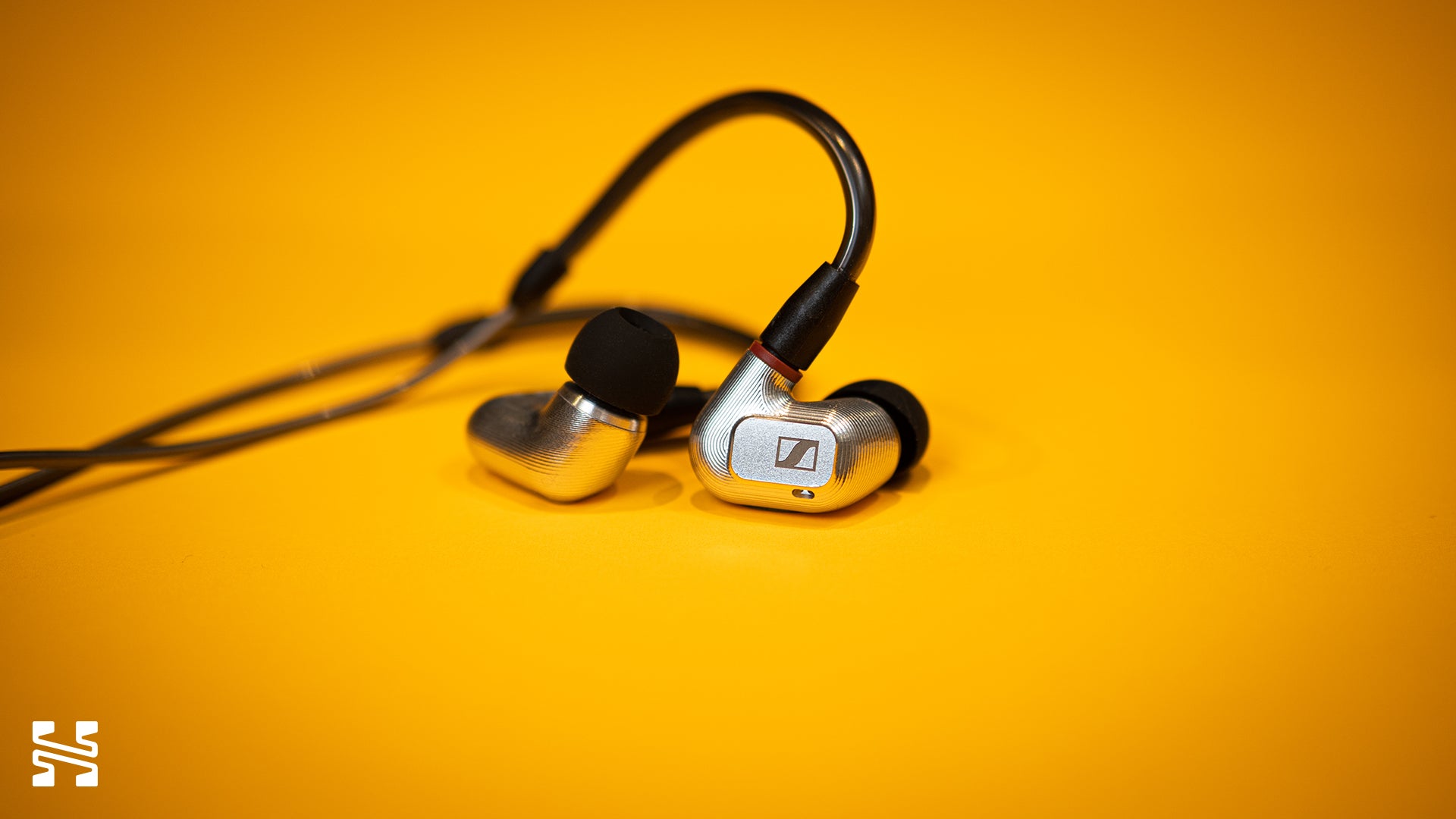
Mids
The greatest weakness of the IE 900 is its midrange. The pinna gain peaks much too early around the 1.5 kHz region and dips further beyond. This results in a stuffy, overly thick tonality as there isn’t enough presence and clarity at 3 - 4 kHz. When compared against IEMs with better midrange tuning, there’s a noticeable shifting of vocal timbre from a clean, clear tone to a congested, nasally one. Of course, this depends greatly on what you’re listening to - male vocalists tend to be less affected while it’s more apparent with higher pitched female singers.
It’s not great, but with a couple days of brain burn-in, I’m not actively bothered by it. I think the IE 900’s treble elevation is doing quite a good amount of work with the vocals here to help restore some of the lost upper harmonics so it’s not quite as bad as it seems initially. And if you’re part of the contingent of listeners who prefers this style of warmer, lusher midrange tuning, then all the power to you.
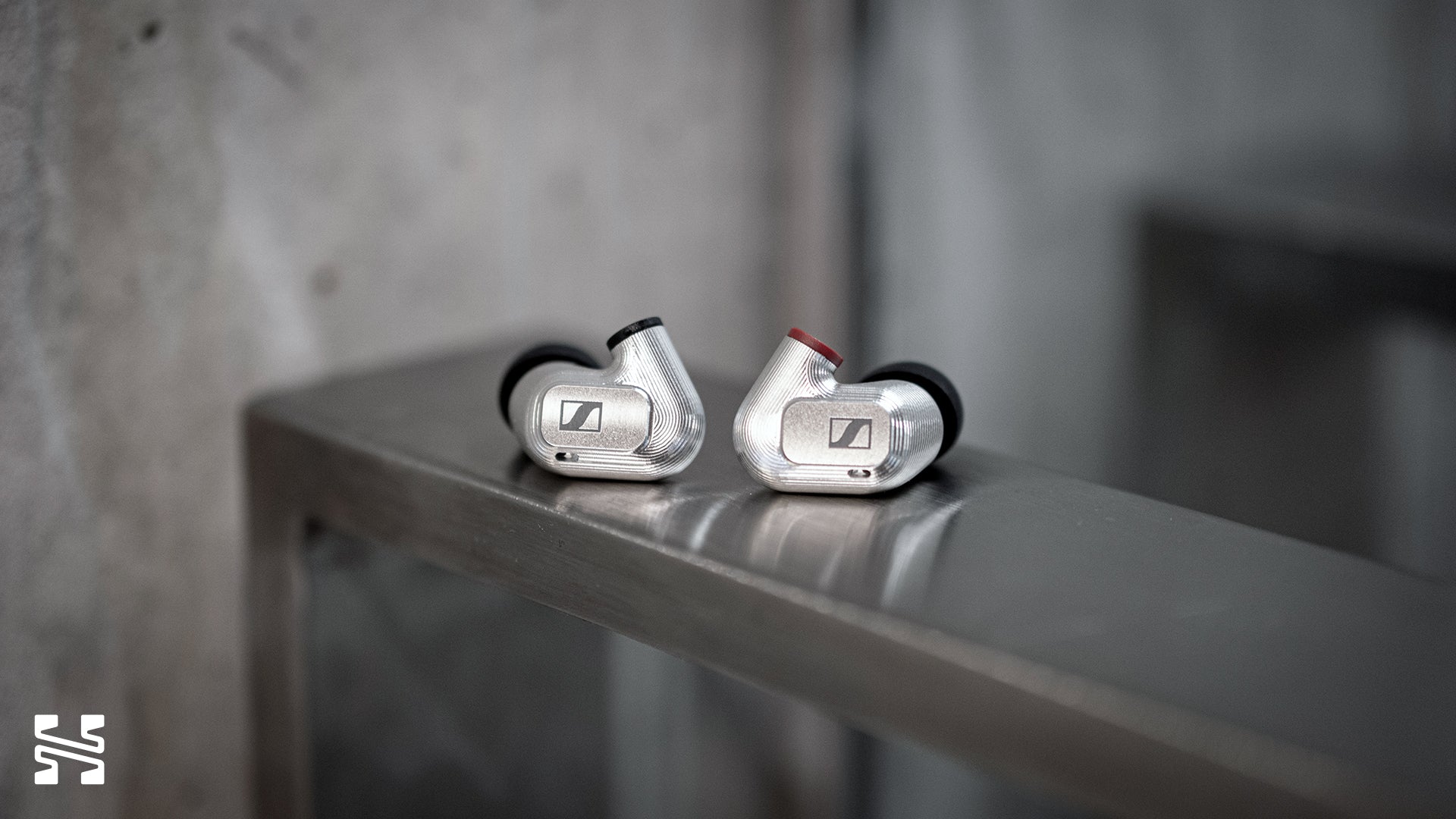
Treble
The treble of the IE 900 is where Sennheiser has spent quite a bit of time fine-tuning. At least, that’s what their marketing materials say. At the heart of this is their X3R technology: a 7 mm TrueResponse transducer combined with three Helmholtz resonator chambers and acoustic vortex. In plain terms, Sennheiser recognizes the challenges that single DD IEMs in their treble response and implemented some tricks to acoustically smoothen errant peaks. While the IE 900 straddles the brighter side, I’d say they succeeded.
The treble is spicy. It’s a broadband elevation in the mid-treble region around 6 - 10 kHz. While there’s definitely occasions where it’s too sharp and peaky, for the most part I find it reigned in just enough for me. I particularly enjoy this form of U-shaped treble tuning - a wide spread of treble brilliance instead of an odd peak or two in the upper treble that poorly imitates a sense of air. Because of the wide elevation, it allows the hats and cymbals to be forward sounding without compromising their timbre by overemphasizing certain parts of a note. There’s an excellent balance between the crisp stick attack, a vibrant body and shimmer, and the delicateness of its decay. The IE 900 accentuates these notes with a rawness to the sound similar to that found in the bass. While some might find it a touch rough, I think it adds a nice texturing and makes music tastefully idiosyncratic.
Note that the stock tips have a small foam insert in them to help tame the treble. You can see it on the graph here; it’s just a slight reduction of the treble when using the stock tips vs. some generic silicon tips I had lying around. While it doesn’t look like much, it does subtly smoothen out some of the peakiness I was complaining about. Personally, I’m fine with either tip but I do recommend tip rolling. It matters more on the IE 900 than it does on a lot of other IEMs.
Presentation
The technical performance of the IE 900 is right where it should be for its kilobuck plus price. Staging is good; the soundstage has decent width, limited height, and a touch of depth. Imaging is fairly nuanced. Notes sweep through the stereo field without being concentrated in any one area.
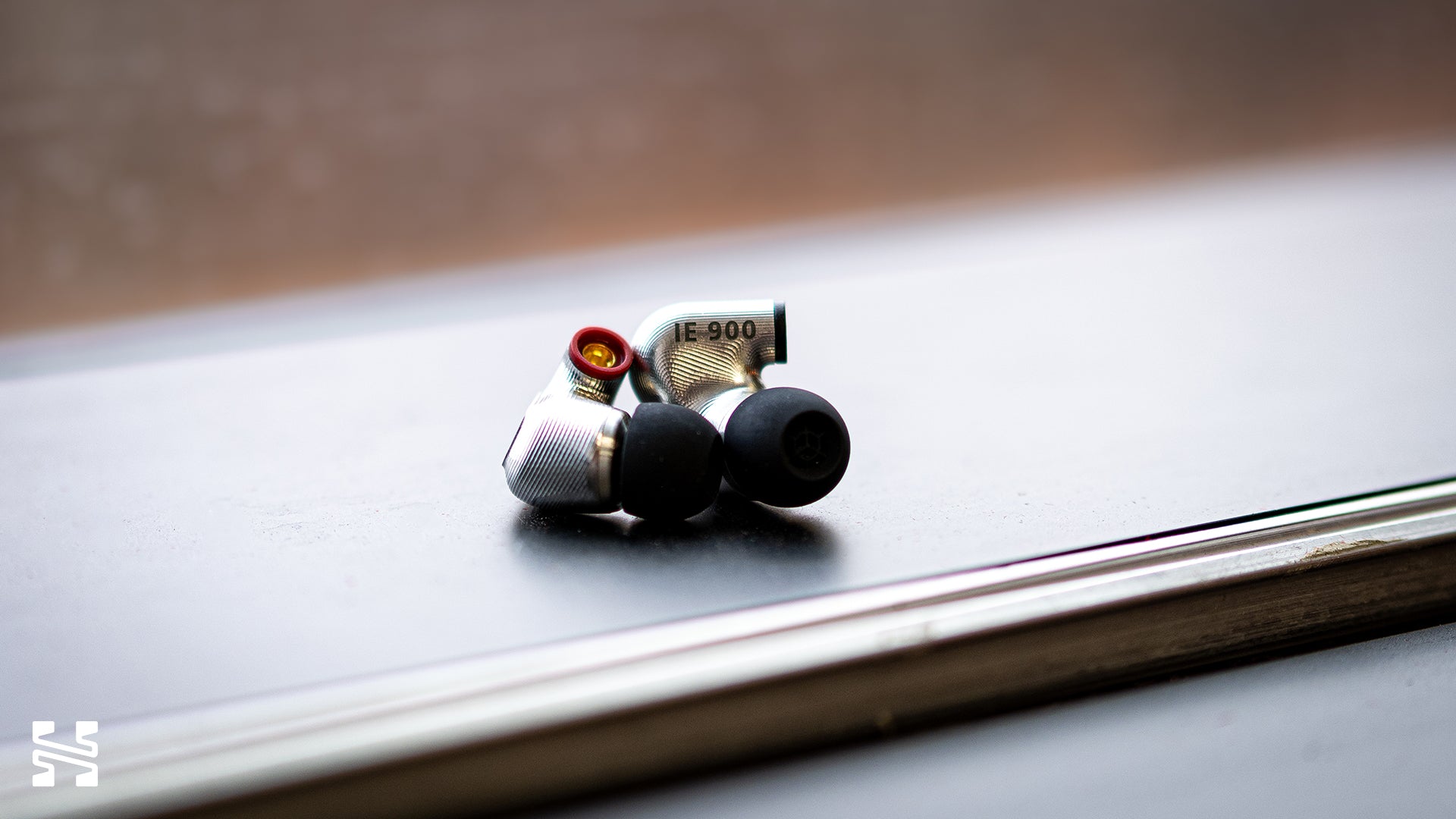
The resolution of the IE 900 is better than I expected. I thought it would be compromised like many basshead IEMs but I find it stands up against benchmark IEMs like the Thieaudio Monarch MkII, 64 Audio U4s, or Symphonium Helios. It’s not so much that the IE 900 highlights new passages I hadn’t picked up on before. Rather, it exhibits superb timbral control so you’re never left with the “one-note bass” syndrome. If I was being nitpicky, the IE 900 could be stronger in its macrodynamic swings. While there’s plenty of weight and impact, it doesn’t explode quite as much as I’d like between passages. On a microdynamic level, the IE 900 is very competent. It’s easy to pick up the volume gradations between notes, even in subtle segments like backing drum roll.
Throughout this review, I’ve emphasized the IE 900’s dynamic bass heft and texturing and how much I enjoy it. And truly, this is where I think Sennheiser has set themselves apart from the rest of the market. I can’t remember hearing another IEM with a similar presentation. Unfortunately, this is the aspect of sound that’s least translatable into words. I see it similar to the Focal house sound with their highly dynamic and punchy drivers where I had to hear it to understand it.
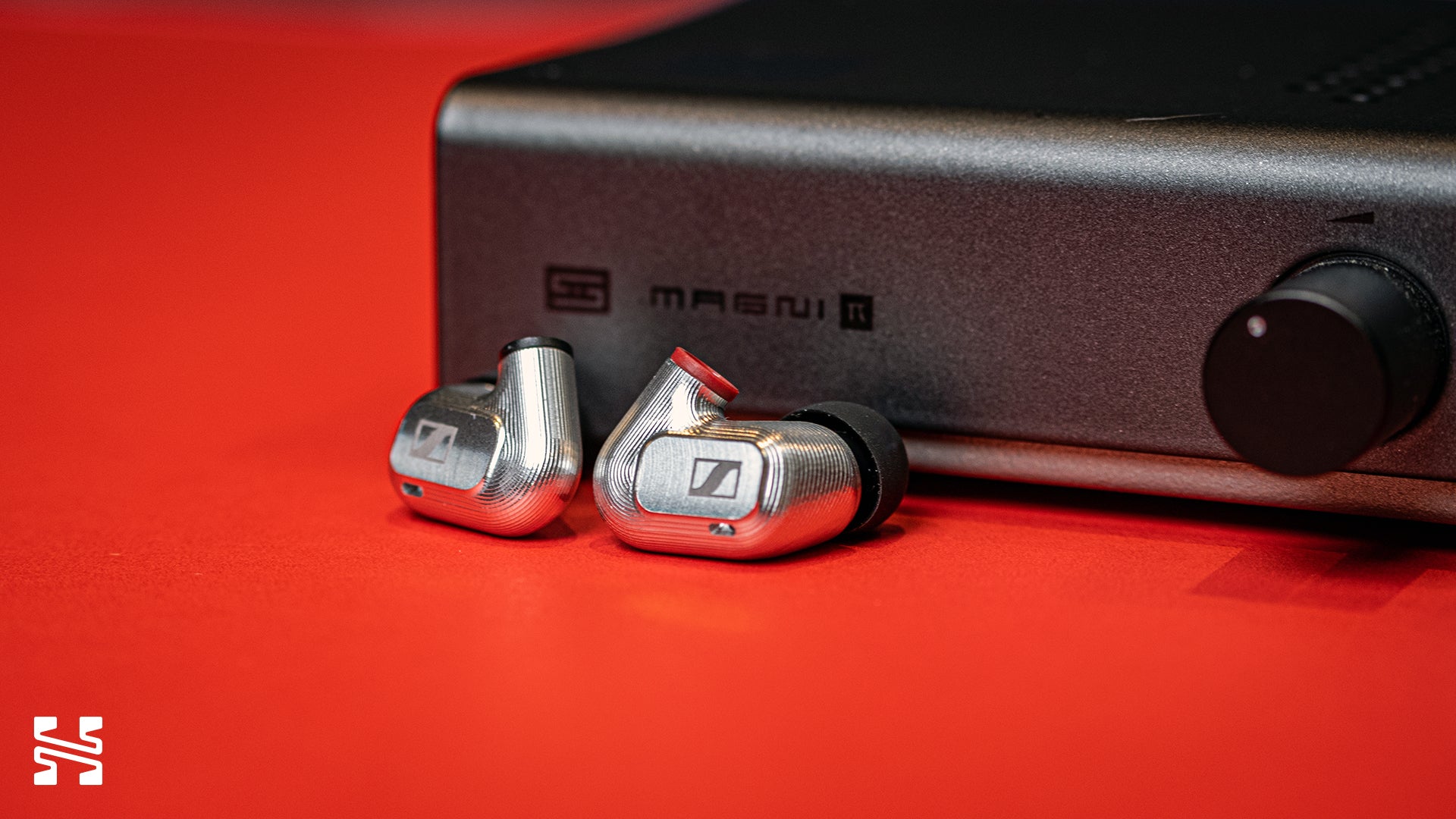
Comparisons
Though the presentation of the IE 900 is unique among the IEM market, its overall tuning and archetype is not. I’ve covered similar “basshead” IEMs in the past and you can read reviews of the Nightjar Singularity and the 64 Audio Volür where I have sections dedicated to comparing them against the IE 900. I prefer the IE 900 to both, except for its weak midrange.
If you’ve been paying attention, you might have noticed a conspicuous lack of comparisons to the Sennheiser IE 600. This is intentional - the next part of this review series will be a dedicated comparison article between the IE 600 and the IE 900.
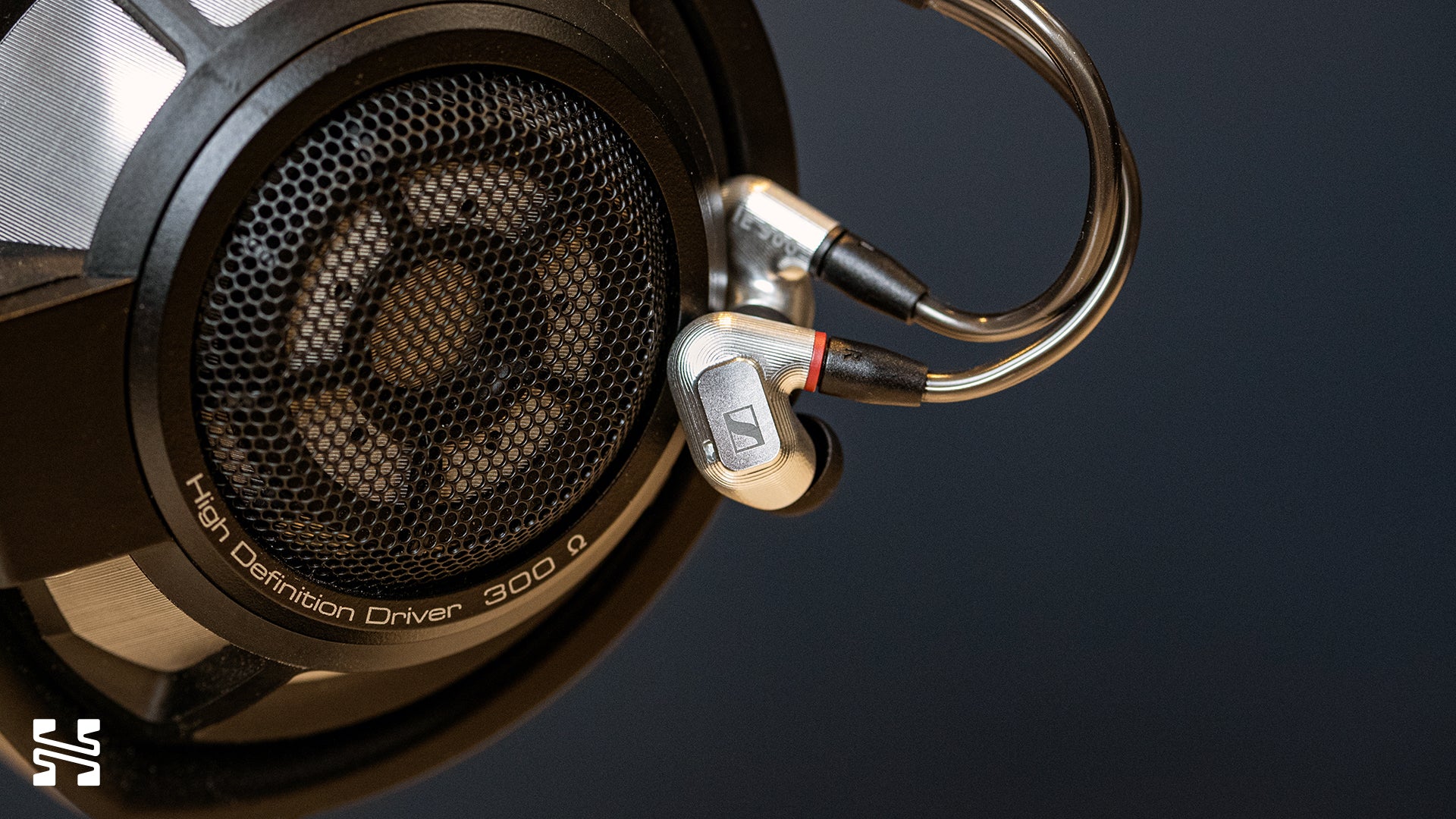
Should You Buy It?
Yes. The Sennheiser IE 900 is an excellent IEM that’s worthy of representing the Sennheiser flagship. More impressive is its single dynamic driver configuration, demonstrating that you don’t need fancy crossovers to hang with the best. I do think it’s a bit expensive and would put it closer to the $1,000 mark to further strengthen its case against the competition in the kilobuck range. But at the same time, I guess I can forgive Sennheiser for the $1,500 price tag since they delivered an IEM with a bass performance unlike anything else in the market. Really, the only complaint I have with it sound wise is its midrange tonality. You could use EQ to help patch it up, but that may affect your perception of the rest of the IE 900’s characteristics.
The hesitation I have with recommending the IE 900 wholeheartedly lies outside its sound. It unfortunately stumbles in a number of design choices that Sennheiser has made with the IE line-up and the IE 900 in particular. Please read the Appendix to be aware of what you might need to watch for. Otherwise, watch for my next couple of articles covering the IE 600 and IE 200.
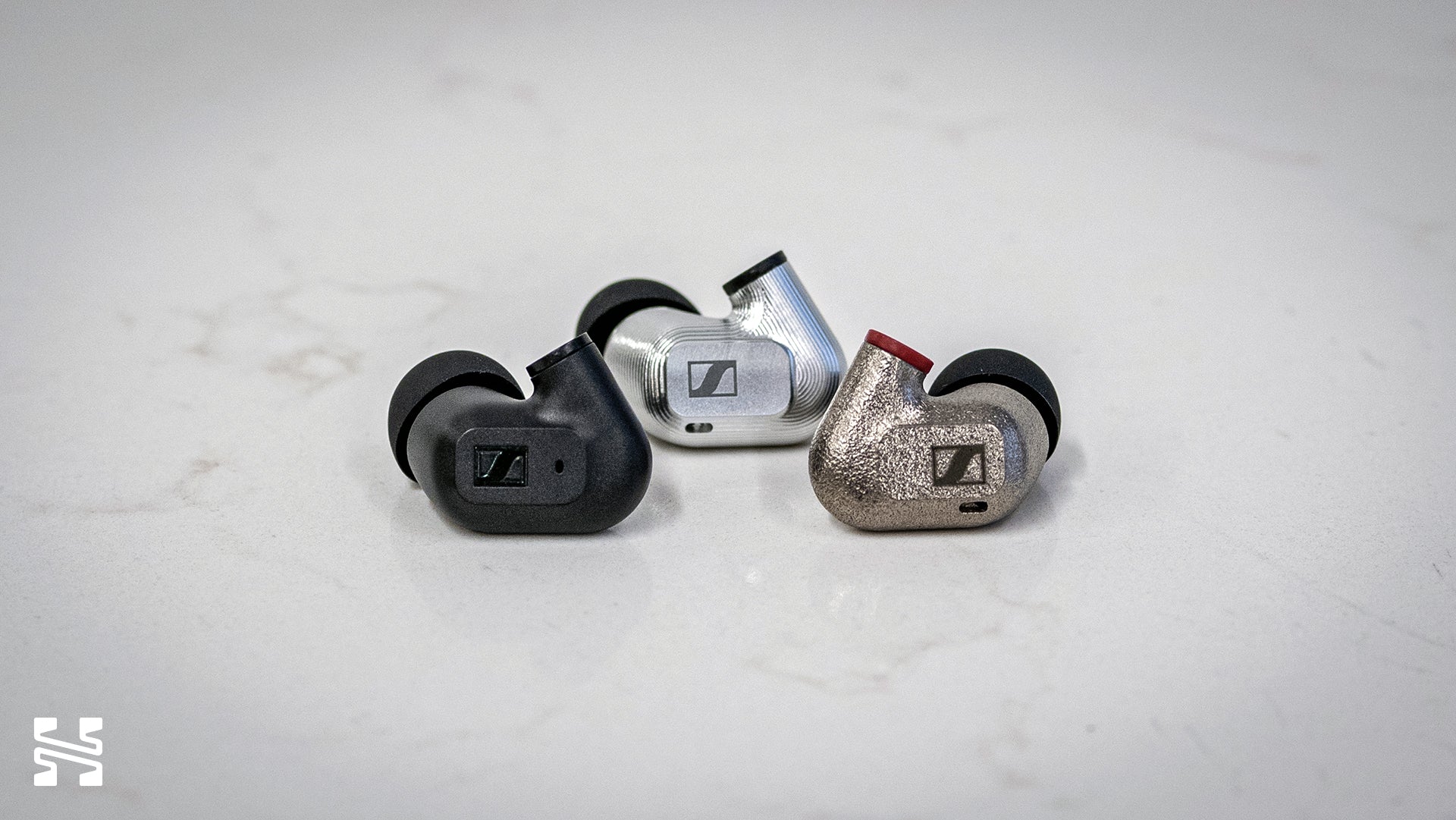
Appendix
The following are the major complaints I have with the Sennheiser IE design. Individually, they aren’t dealbreakers. But it feels like an unnecessary way for Sennheiser to shoot themselves in the foot for their attempt back into the IEM market. I sincerely hope that with future products, or if they do an “S” revision like their other products, they’ll pay attention to these issues that most other IEMs in the market have resolved.
The Stock Tips
The silicone tips that come with the IE line-up have a rather awkward fit in my ears. I have to position them perfectly to get a good seal. Otherwise, they fold-in on themselves at the edges and leak. This is likely because the silicone they use isn’t like the standard silicone used with almost every IEM tip. Instead, it’s some sort of thin, flimsy, smooth, and slippery feeling material. As such, if you ever try to demo this at a shop, you might have a hard time getting a good result without spending some time to ensure a good seal. That was my experience the first time I ever tried it and had to resort to some aftermarket tips like the AZLA Sedna’s, at the cost of the foam filters that help tame the treble in the stock tips.
The Proprietary MMCX Connectors
The IE line-up uses MMCX connectors. However, Sennheiser has chosen to slightly recess the MMCX jack so there’s a small protruding collar just outside of it. This prevents most aftermarket cables, which are typically flush at the MMCX termination, from connecting. Sennheiser’s own cables are protruded slightly to fit.
This isn’t the first time a big company has done this with their IEMs - the Sony IER line-up comes to mind. But those IEMs were more accommodating, with a deeper recession and wider collar to allow standard cables to fit. The IE line-up offers no such convenience. Presumably, this is why the IE 900 includes three cables since you’re not going to easily find new cables that will fit.
To make matters worse, these recessed MMCX connectors seem to have connectivity issues. Sometimes when I move my head, the sound cuts out for a split second. From what I understand, this is an issue with the stock cable as aftermarket cables don’t seem to have this problem.
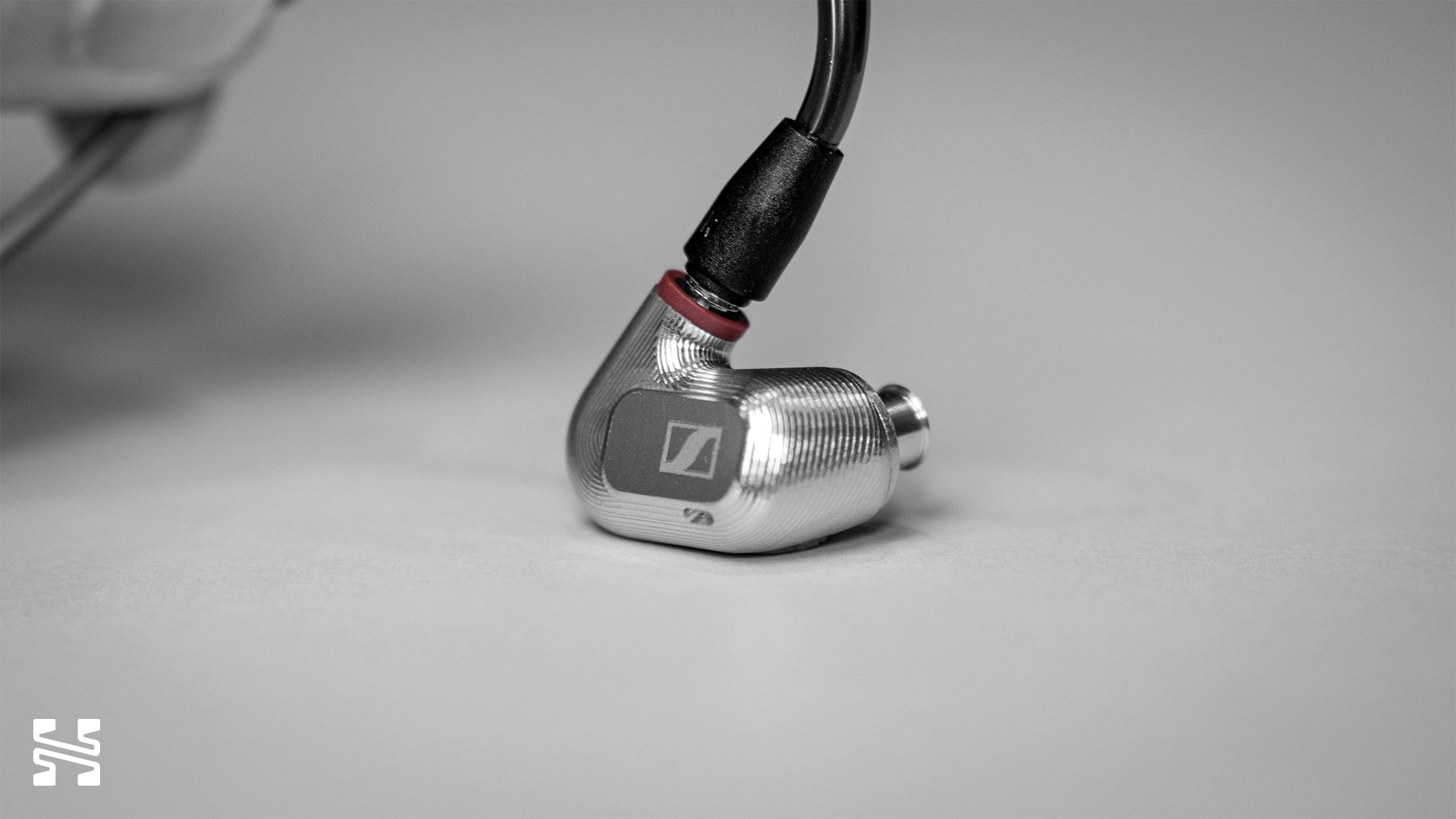
Ergonomics and Shell Design
The shell of the IE line-up is rather small and would look like it fits very well, being modeled after stage IEMs. The problem however is the size and angle of its nozzle relative to the body of the shell. It’s challenging to grip and fits in at a bit of an awkward angle, not being quite as natural to insert as other IEMs I’ve used to. I’m not able to get it to fit in as deeply as I would like. With the IE 900 specifically, if I push it in further for a deeper fit, the milled body of the shell starts to dig in against my ear and become uncomfortable. Sometimes even painful. Some people might not have an issue with the fit, especially when trying it on quickly at a demo shop, but it’s something to be aware of.
Fakes
This isn’t something Sennheiser has any control over but it is an important thing to be aware of with the IE line-up. Given the popularity of Sennheiser products, there’s been a number of fakes floating around of the IE 900 that I’ve seen. Presumably the IE 600 and IE 200 have their share of fakes too. Do buy from a reputable vendor if you plan on picking one up. If the price is too good to be true, it almost certainly is. There’s a few discussion threads online on how to spot fakes so I recommend you do your research if you do choose to buy from a less than reliable source.
